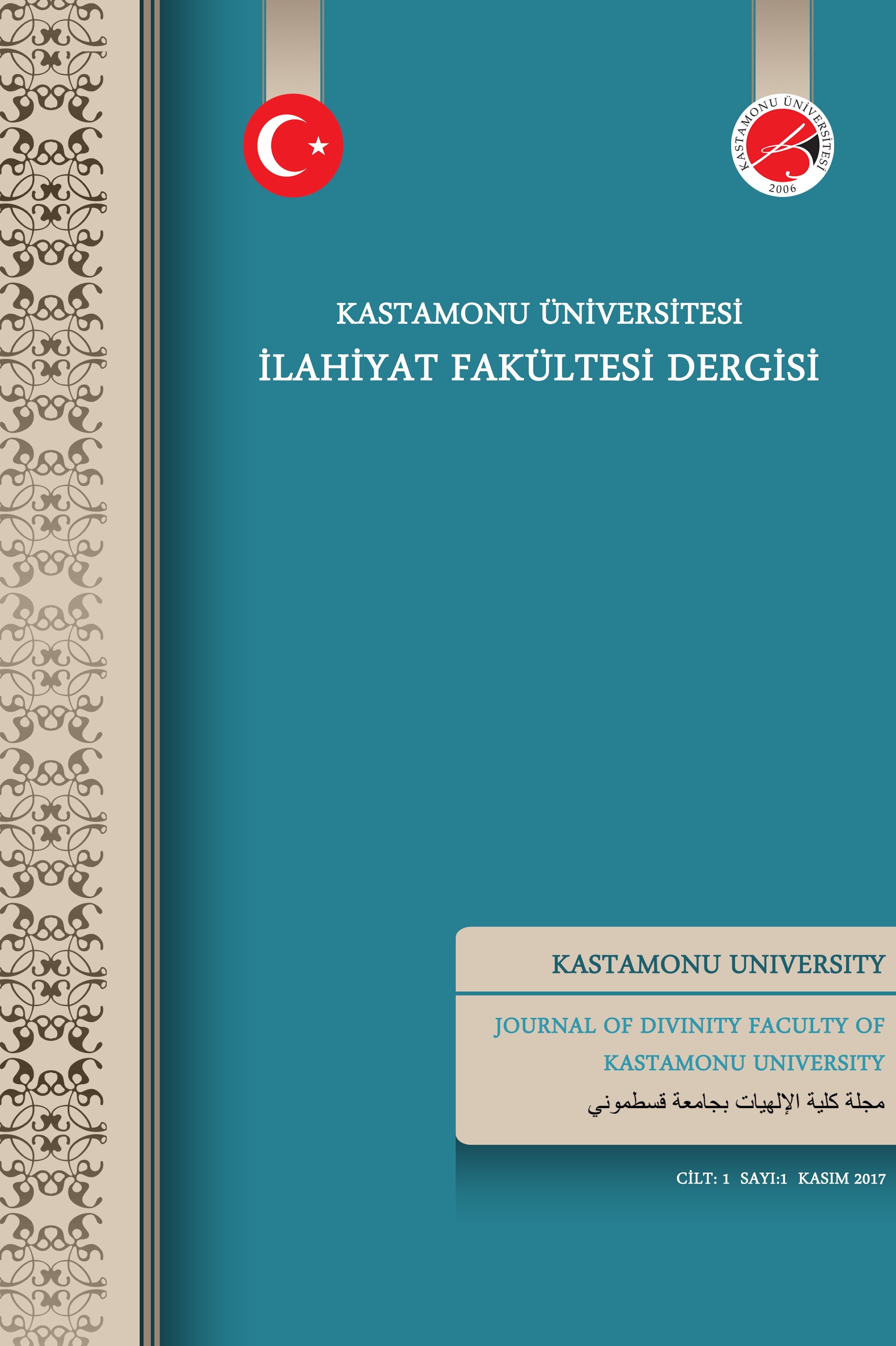Lise Öğrencilerinin Din Kültürü ve Ahlak Bilgisi Dersinde Drama Yönteminin Kullanımına Yönelik Görüşleri
Bu çalışmanın amacı lise öğrencilerinin Din Kültürü ve Ahlak Bilgisi dersinde drama yönteminin kullanılmasıyla oluşan görüşlerini belirlemektir. Araştırma nitel boyutta eylem araştırması ile yürütülmüştür. Çalışma da amaçlı örneklem kullanılmıştır. Araştırma Elazığ İlinde bulunan Harput Anadolu Lisesinde 10. Sınıfta eğitim ve öğretim gören 39 öğrenci ile gerçekleştirilmiştir. Çalışmada veriler yarı yapılandırılmış görüşme ile elde edilmiştir. Veriler N-vivo 8 programı ile analiz edilerek, temalara ayrılmıştır. Araştırmada bilişsel özellikler, duyuşsal özellikler, uygulama ve öneriler olmak üzere 4 ana tema oluşmuştur. Bilişsel özellikler ana teması altında anlama, transfer, öğrenme, kalıcılık, hatırlama ve dikkat çekicilik alt temaları oluşmuştur. Duyuşsal özellikler ana teması altında ise beğenme, eğlenme, hoşlanma, ilgi, mutluluk, öz güven, merak etme, komik ve heyecan alt temaları oluşmuştur. Uygulama ana teması altında ise olumlu ve olumsuz olarak iki alt tema oluşmuştur. Öneriler ana teması altında ise dersimizde tekrar kullanılsın ve diğer derslerde de kullanılsın olarak iki alt tema oluşmuştur. Araştırmanın ana tema ve alt temalarından yola çıkılarak sonuç kısmı yazılmıştır. Daha sonra literatürde ki araştırmalar ile sonuç kıyaslanarak tartışma bölümü yazılmış ve araştırma sonucunda diğer araştırmacılara yol göstereceği düşünülen önerilere yer verilmiştir.
Anahtar Kelimeler:
Din Eğitimi, Din Kültürü ve Ahlak Bilgisi Dersi, Nitel Desen, Drama.
Students of the Faculty of Theology Evaluation of High School Students' Views on the Use of Drama Method in the Religious Culture and Moral Knowledge Course
The aim of this study is to determine the opinions of high school students formed by using the drama method in the Religious Culture and Moral Knowledge course. The research was carried out with a qualitative action research. In the study purposive sampling was used. The research was carried out with 39 students studying at the 10th grade in Harput Anatolian High School in Elazig. The data in the study were obtained by semi-structured interview. The data were analyzed with the N-vivo 8 program and divided into themes. In the research, 4 main themes emerged as cognitive features, affective features, practice and suggestions. Under the main theme of cognitive characteristics, sub-themes of understanding, transfer, learning, permanence, recall and attention were formed. Under the main theme of affective characteristics, sub-themes of liking, having fun, enjoying, interest, happiness, self-confidence, curiosity, funny and excitement were formed. Under the main theme of the application, there were two subthemes as positive and negative. Under the main theme of suggestions, there were two sub-themes: Let it be used again in our lesson and Let it be used in other lessons too. Based on the main themes and sub-themes of the research, the conclusion part was written. Afterwards, a discussion section was written by comparing the results with the studies in the literature and suggestions that were thought to guide other researchers were included as a result of the research.
___
- Agun, Bahar Avcı. İlköğretim 4.Sınıf Matematik Öğretiminde Hazırlıklı-Planlı Dramaya Uygun Etkinliklerin Geliştirilmesi. Rize: Rize Üniversitesi, Sosyal Bilimler Enstitüsü, Yüksek Lisans Tezi, 2012.
- Akyüz, Hacer. İlköğretim Din Kültürü ve Ahlak Bilgisi Derslerinde Kullanılan Drama Yönteminin Öğrencilerin Ahlaki Kazanımları ve Derse Yönelik Tutumları Üzerindeki Etkisi. Samsun: On Dokuz Mayıs Üniversitesi, Sosyal Bilimler Enstitüsü, Yüksek Lisans Tezi, 2009.
- Altıkulaç, Ali. 8. sınıf T.C. İnkılâp Tarihi ve Atatürkçülük Dersinde Bir Öğretim Tekniği Olarak Drama. Ankara: Gazi Üniversitesi, Eğitim Bilimleri Enstitüsü, Yüksek Lisans Tezi, 2008.
- Apaydın, Nazan. Drama Etkinlikleriyle Destekli Görsel Sanatlar Dersine Yönelik Öğrenci Görüşleri, Eskişehir: Osman Gazi Üniversitesi, Sosyal Bilimler Enstitüsü, Yüksek Lisans Tezi, 2010.
- Arslan, Mehmet. "Eğitimde Yapılandırmacı Yaklaşımlar." Journal of Faculty of Educational Science 40/1 (2007), 41-61.
- Yayın Aralığı: Yıllık
- Başlangıç: 2017
- Yayıncı: Kastamonu Üniversitesi
Sayıdaki Diğer Makaleler
İslam Hukukunda Nukût'un (Düğünlerde Takılan Takılar) Niteliği: Hibe mi, Borç mu?
Akıllı Tasarımın Bilimselliği Problemi
Ni‘Me’l-Ceyş’in Kastamonu’yu Şereflendiren Yıldızı: Kays B. Mâlik El-Hemdânî
Abdal Yâkub/Hekimoğlu Ali Paşa Tekkesi, Şeyh Mehmed Rızâ Efendi ve Kütüphanesi
Diyarbakır İl Halk Kütüphanesi’nde Bulunan Tasavvufî Yazma Eserler
Kur’ân Bağlamında Cin Gayb İlişkisi ve Cinlerin Gaybı Bilmelerinin İmkânı
GORGİAS DİYALOĞU’NUN TARIŞMA SANATI AÇISINDAN DEĞERLENDİRİLMESİ
